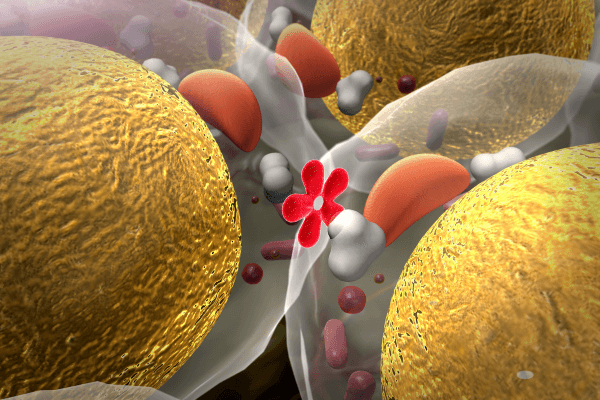Food has become an important part of life in this changing world. People love to eat food which is loaded with flavour and has a good umami taste which contributes to satiety and maybe food addiction.
Flavour vs flavour enhancers
The flavour of food which we perceive can be comprehended in 2 ways:
- Biological perception – The sensation of taste which we feel in our mouth along with the aroma receptors in the nose.
- Property of the material – The innate nature which the food possesses by itself.
Flavour enhancers on the other hand are typically those agents which can improve the taste of the food without imparting a distinct taste of it’s own. Though there are different types of flavour enhancers, monosodium glutamate (MSG) is a flavour enhancer cum flavour suppressor.
Umami taste and MSG
Umami is a Japanese word which describes one of the five types of tastes we perceive. The use of umami flavour enhances the taste of food but with an aftertaste. It stimulates increased salivary secretion and a feeling of furriness over the tongue. Most of the receptors present on the tongue have the ability to perceive umami flavour.
Glutamate vs monosodium glutamate
Both glutamate and monosodium glutamate are the monosodium salts of glutamic acid. However, the breakdown of monosodium glutamate is responsible for the umami taste.
Food sources of glutamate
Glutamate is an amino acid which occurs in proteins, tissues and peptides. Free glutamate may be formed through protein hydrolysis fermentation, ageing, ripening and heat cooking process. Glutamate is the major reason for the savoury taste of meat, cheese, seafood and broths.
| Food source | Free glutamic acid (mg/100g) |
| Chicken | 22 |
| Beef | 10 |
| Pork | 9 |
| Mushroom | 42 |
| Shitake mushroom | 71 |
| Tomato | 246 |
| Potato | 10 |
| Corn | 106 |
All about MSG
How is MSG made?
MSG is produced commercially through the fermentation of molasses and starch hydrolysate as the raw materials. The sources of nitrogen for the raw materials are ammonium salts and urea. The culture medium becomes acidic due to ammonium ions and L-glutamic acid. The broth is adjusted to a suitable pH and the L-glutamic acid ions are extracted and converted to MSG.
Metabolism of MSG in the body
Humans are exposed to glutamate in the body via 2 sources:
- Digestion of protein-rich food sources
- Ingestion of food with considerable amounts of free glutamate (MSG additive, naturally present or hydrolysed protein)
Glutamic acid from dietary proteins is broken down into amino acids and small peptides. The mucosal cells hydrolyse the small peptides to free amino acids. A large proportion of glutamate is metabolised by the intestinal cells (via systemic circulation) while the remaining are metabolised by the liver in portal circulation.
Functions of MSG in the human body
The daily turnover of MSG in the body is estimated to be 4800mg.
- It acts as an energy source for certain tissues.
- It is an important neurotransmitter for ⅓ of the nerves in the CNS.
- It supplies glutamine which is an important reaction in amino acid metabolism.
- It plays an important role in the transamination of certain amino acids (needed for the biosynthesis of amino acids).
- It helps in protein synthesis.
Consumption of MSG
There is a habitual increase in the consumption of MSG in different countries due to changes in dietary habits over the past decade where busy schedules for individuals force them to opt for ready food, pre-packaged, canned and taken out more often. These foods contain added MSG.
| Countries | Daily intake of glutamate |
| Western societies | 12mg/kg/day |
| USA | 0.55g/day |
| Japan and Korea | 1.2-1.7g/day |
| Malaysia | 0.24-8.16mg/g |
| Taiwan | 3g/day |
Recommended levels of MSG in food
Asian cuisine and processed food usually contain added MSG. In 1958, the US Food and Drug Administration (FDA) declared MSG to be generally safe. Animal studies conducted on MSG revealed that MSG has low toxicity. In 1995, a directive of the European directive established a fixed limit of 10g/kg for L-glutamate and salts present in food. However, they did not establish any fixed limit for the use of MSG in baby food and unprocessed food since glutamate and salts are prohibited. The FDA, has also mentioned that the food products must mention glutamate used in food by the common name (monosodium glutamate). Hence many food manufacturers regularly mention words such as “no MSG”, “no added MSG”, “no MSG added” etc. on the food label.
Impact of MSG on health
The global intake of MSG has increased in multiple folds in the past few years. There are several studies conducted on the negative impact of MSG on health with contradictory results.
| Alleged health impact | Cause |
| Obesity | 95% of the cause of obesity is due to dietary reasons. Studies show that MSG can alter leptin metabolism and cause hypothalamus lesions leading to disproportionate energy balance (the cause of weight gain). |
| Diabetes Mellitus | MSG is the primary ingredient used in several food products. A study conducted on the relationship between MSG and Diabetes mellitus revealed that, by introducing 2-4 mg/kg body weight of MSG, individuals developed: 1. Hyperglycaemia in 30-90 days2. Diabetes Mellitus in 180 days |
| Hypertension and cardiac health | Hypertension is an important risk factor for several heart diseases such as coronary artery diseases, atrial fibrillation, and peripheral vascular disease. A study conducted on 20-year-old individuals from China revealed that they consumed more fat and sodium along with ~4g/day MSG had elevated systolic blood pressure levels in the 5-year follow-up. MSG also may increase cardiac tissue oxidative stress due to the increase in heart disease biomarkers such as lactate dehydrogenase (LDH), aspartate transaminase (AST), and alanine transaminase (ALT). |
| Cancer | Animal studies revealed that MSG is indirectly linked to cancer. Hypercholesterolemia, hyperinsulinemia, and hyperglycaemia were induced in rats who were administrated with different concentrations of MSG. They also had a greater risk of developing colorectal cancer. |
| Pregnancy and lactation | Though there has been no conclusive evidence of the impact of MSG on the mother’s and foetal health, studies suggest that the concentration of amino acids are higher in the developing foetus irrespective of the mother’s diet. The placenta and the foetus’s liver play crucial roles in amino acid transport and metabolism (specifically glutamate) which are important for foetal development. According to another study, breastfeeding provides more free glutamate/kg/body weight during infancy than other phases of growth. |
| Neurological effects | Glutamate is a neurotransmitter which is importantfor brain health. Consumption of glutamate must be carefully managed. Overdose of any neurotransmitter can turn into an excitotoxin which can over-excite cells and damage them. The imbalance of glutamate can lead to neurotoxicity. MSG toxicity is related to migraines, seizures, autism, ADHD, hyperactivity, Alzheimer’s disease, multiple sclerosis and Parkinson’s disease. |
| Appetite | MSG enhances several characteristics of food such as taste, flavour, mouth feel etc. This contributes to an increased preference for food. The preference for the umami flavour of food depends on nutrition status. Poorly nourished individuals have a higher preference for umami food in comparison to well-nourished individuals. Preference of high protein food is also associated with umami taste sensitivity. |
| Oral health | Eating promotes salivary secretion. Saliva acts as a lubricant in chewing and swallowing food. The umami taste of MSG triggers higher salivary secretion. Salivary immunoglobulin A is more common when food with MSG is consumed. A study concluded that consumption of food with MSG could help improve conditions of dry mouth in the elderly. |
| Oxidative stress | Glutamic acid is an amino acid which the kidney utilises in gluconeogenesis. Lactate, glycerol, glutamate, glutamine and other amino acids are also needed for glucose synthesis from non-carbohydrate sources. An increased influx of many precursors can be associated with oxidative stress. |
MSG sensitivity
Chinese restaurant syndrome (CRS) also known as MSG symptom complex is a cumulation of several symptoms which may manifest as the below symptoms in 1-2 hours after consumption of MSG:
- Weakness
- Flushing
- Dizziness
- Headache
- Difficulty breathing
- Numbness
- Muscle cramps
- Syncope
MSG sensitivity is said to be present in less than 1% of the population. A study revealed that the administration of 5g of MSG and consumption of a high amount of MSG on empty stomachs without solid food-induced symptoms of CRS in individuals.
MSG is a very controversial flavour enhancer. Though MSG improves the flavour, texture, mouth feel, and taste of the food it does come with its own baggage of health complications which have been evidenced in animal and human studies alike. Careful consideration of the quantity of MSG consumed must be practised when eating food with MSG. Excessive consumption can increase appetite while leading to metabolic diseases, infertility, psychological disorders, GI symptoms etc.
Mayuri,
Dietetic Researcher, Simplyweight













